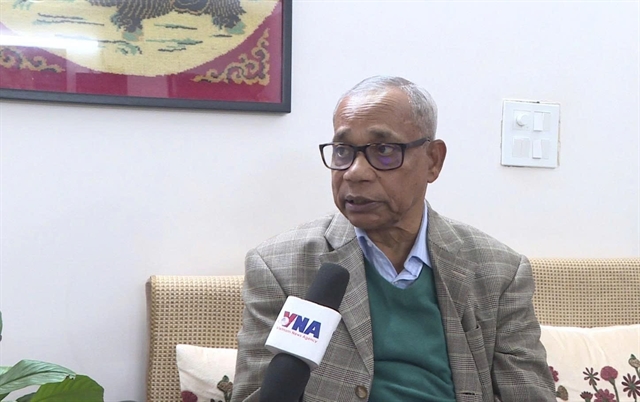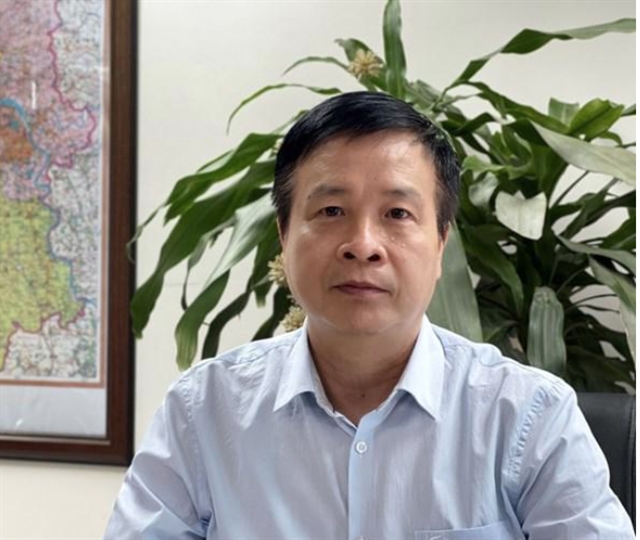 Opinion
Opinion


|
| Nguyễn Hoàng Hải, director of the Hà Nội Public Transport Management Centre. Photo ktdt.vn |
Recently, Hà Nội's Department of Transport has proposed allowing other vehicles to use the exclusive lanes of Bus Rapid Transit (BRT). Nguyễn Hoàng Hải, director of the Hà Nội Public Transport Management Centre, talks with Kinh Tế & Đô Thị (Economic & Urban Affairs) newspaper about the issue.
Could you please tell me why Hà Nội’s Department of Transport has proposed other vehicles use BRT lanes?
The city’s first rapid route, Kim Mã-Yên Nghĩa, has been operating for six years. The bus route runs along Yên Nghĩa-Ba La-Lê Trọng Tấn-(extended) Lê Văn Lương-Láng Hạ-Giảng Võ-Kim Mã.
Although it could not operate according to the original design, such as not guaranteeing the operating speed and bus frequency, the BRT bus has been effective in contributing to reducing private vehicles.
However, the express bus faces much pressure because there is not a separate lane for the whole route. Consequently, the lanes are used by other vehicles causing speed and safety issues for the buses.
Therefore, it is necessary to review and reorganise the plan to create favourable conditions for BRT and consider the needs of other types of vehicles, especially ambulances, fire trucks and official vehicles.

|
| The Hà Nội Department of Transport proposes other vehicles use BRT lanes. — VNA/VNS Photo |
What types of vehicles will share lanes with BRT under the proposal?
The fact that as long as the BRT buses do not operate according to the design does not clearly show the attractiveness and superiority of this transport. Certainly, we still organise traffic with the motto of making BRT the highest priority.
However, recently, the Hà Nội Institute of Socio-Economics conducted a survey on the operation of BRT buses and suggested that during off-peak hours (from 10pm to 5am), other vehicles should be allowed to run in BRT lanes to avoid waste.
And the Hà Nội Department of Transport proposed to the city’s People's Committee allow passenger vehicles with 24 seats or more, buses, official vehicles, ambulances and fire trucks to use the lanes.
Will the proposal increase efficiency?
We made the proposal because we realised that the current operating frequency of BRT buses did not cover all time frames, and the gap between buses was very large. The gap lets other vehicles encroach on the BRT lane.
The 3.5m-wide BRT lane is accessible for big passenger vehicles. So, if the BRT lanes are shared with other vehicles, it can reduce traffic pressure and minimise vehicle encroachment during off-peak hours.
However, mixing other vehicles on the BRT lanes should be piloted on specific sections for a certain time to consider and evaluate the effectiveness.
Many say BRT buses are not effective, what are your thoughts on this?
Frankly, the BRT bus route has not yet operated as per the design and has not completed its own lanes.
To make the BRT bus achieve the desired effect, the frequency of BRT buses must be increased according to the design, every three minutes.
This frequency will prevent other vehicles from entering the BRT lane, and we will not need to reorganise traffic.
Many experts said that Hà Nội’s public transport network only meets 10 per cent of travel needs. Nine out of 10 people do not use buses, so public pressure on public transport in general and BRT buses, in particular, is always very strong. We need a lot of determination and time to change that prejudice.
If the proposal for shared use of BRT lanes is approved, will it be implemented in the long or short term?
The lane sharing will undoubtedly be implemented in a specific period in accordance with current conditions but still give the highest priority to BRT buses.
When the BRT operates at the designed capacity and has more passengers, we will reorganise the traffic.
This is just a pilot proposal to find the optimal way to organise traffic and minimise the encroachment of BRT bus lanes. If approved, we will arrange it openly and transparently.
We need to clarify that public transport service cannot be profitable because we are offering a very cheap bus and train fare system for passengers who directly benefit so cannot expect public transport service to be as profitable as other businesses.
The public transport service encourages people to switch from private vehicles to public transport to reduce traffic congestion and environmental pollution.
Because of this goal, the Hà Nội authority pays subsidies to the public transport service. — VNS




